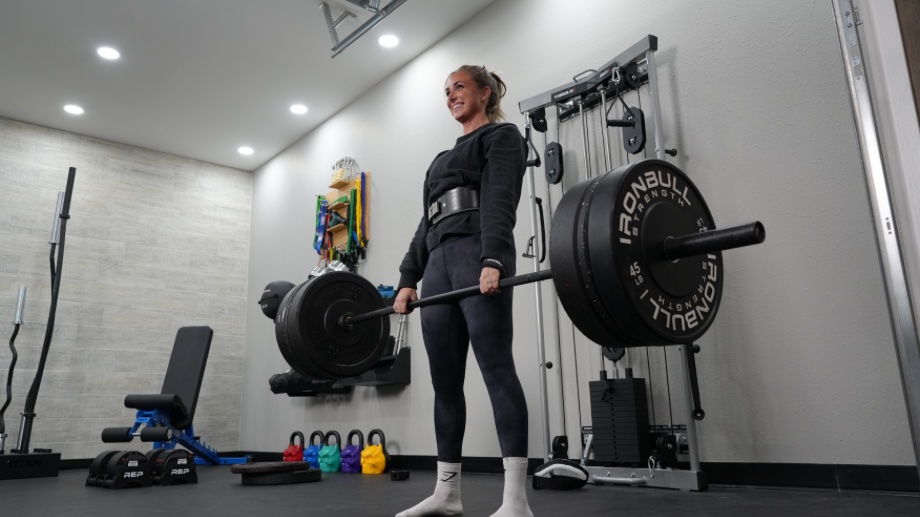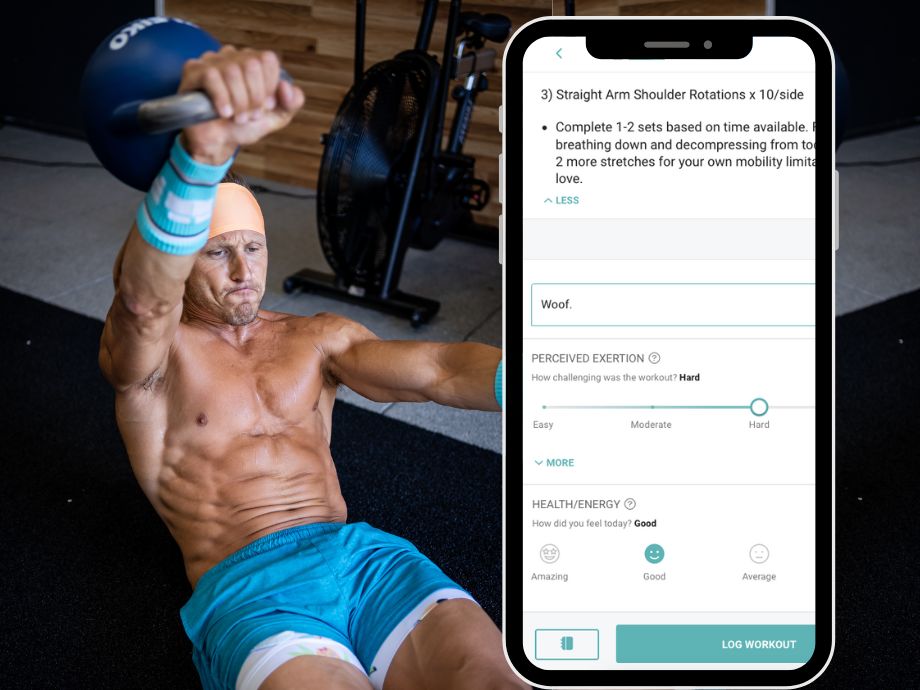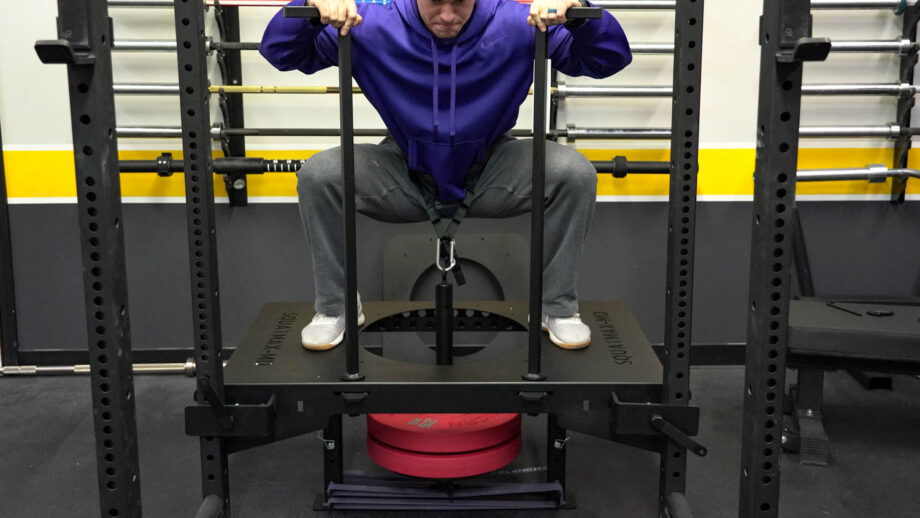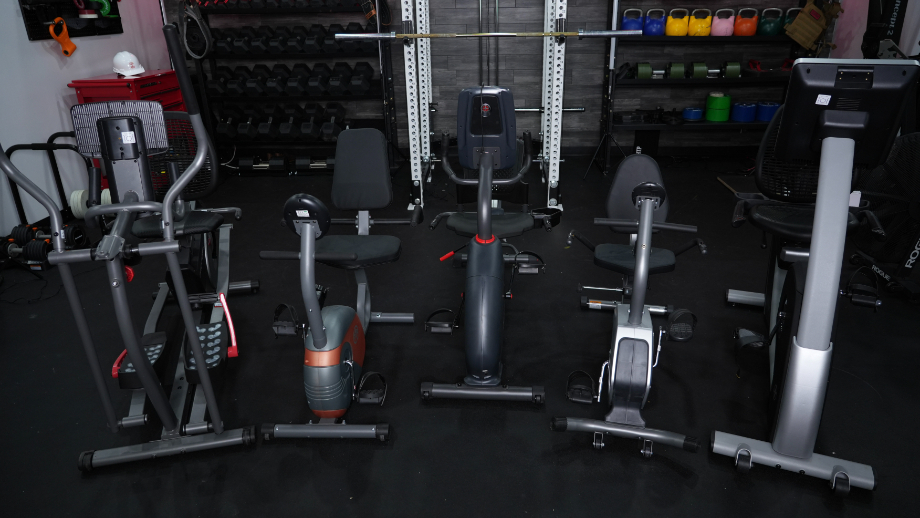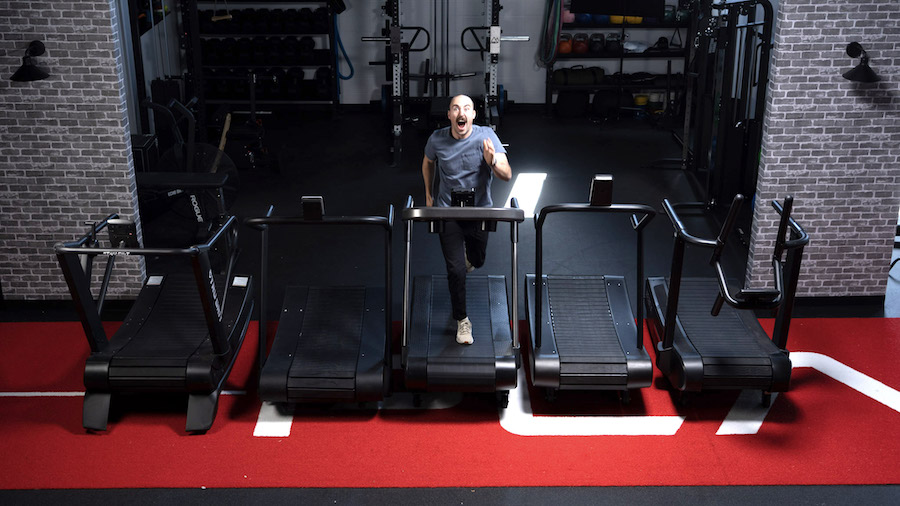The deadlift is a staple in just about any lifter’s strength training routine. Whether or not you’re an aspiring powerlifter, a CrossFit athlete, or just training for fun, if you’ve spent some time in a gym, you probably know how to deadlift. Still, if you’re wanting to get the most out of your heavy deadlift session, I’ve got you covered on the best deadlift warm-up.
As an Olympic weightlifter for over two decades, I’ve had my fair share of warm-up routines—some good, and some not as good. I’ve taken my experience as an athlete and coach to provide a solid warm-up that can act as a foundation for your next deadlift workout.
Here, I’ll go over good warm-up practices and why you should warm up, and also provide a warm-up for your next training session. This warm-up can act as a template, too, that you can personalize to your specific needs. If you’re ready, grab your best Olympic barbell and read on to learn how to warm-up your deadlift.
The Why (and How) of Warming Up
Warm-ups are a common practice for just about any exercise: bench presses, squats, Olympic lifting, and even bodyweight movements. If you’re hesitant to add warm-up sets to your workout routine and overexert yourself, you’re not alone. Still, there’s a reason behind a solid warm-up. I’ll go into the benefits of proper warm-up in more detail later, but warm-ups have multiple physical and mental goals:
- Increase your body temperature1, allowing the muscles to become more elastic and primed to move
- Improve blood flow to the muscles1
- Mimic movement patterns of the exercise2 to both activate the muscles used and ready the nervous system
- Feel mentally prepared for your working sets
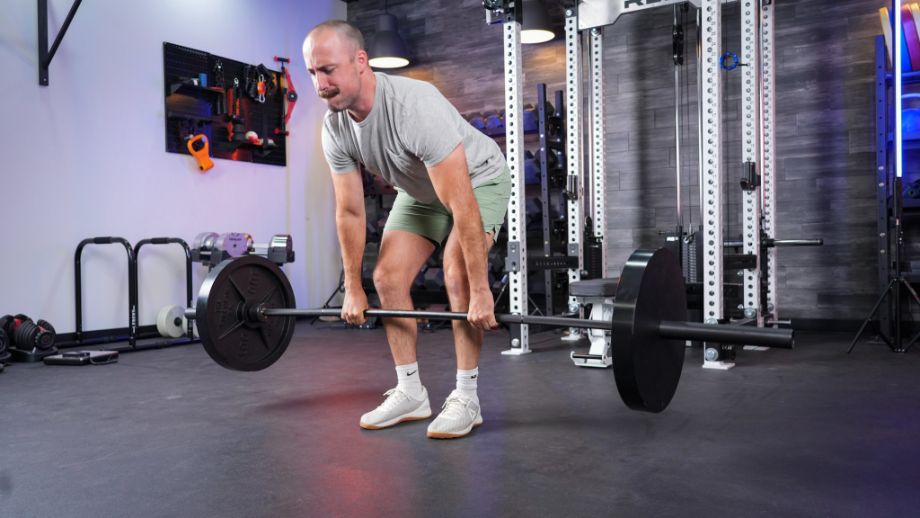
That’s great, but how do you properly warm up to accomplish these goals? If you want to go from your warm-up right into your workout, a good rule of thumb is to have your warm-up take no longer than 20 minutes. That will help keep you moving, your body temperature elevated, and your muscles warm.
There are two types of warm-ups: general and specific.
General warm-ups ready your entire body by preparing large muscle groups and raising body temperature. This can start with foam rolling or using another muscle recovery tool and then transition to light cardiovascular exercise—rowing, cycling, or jogging for a few minutes.
After raising your heart rate and loosening up tight muscles, you can transition into specific warm-ups, targeting the muscle groups you’ll use in your workout. These warm-ups will target movement patterns of the exercise as well. Warm-up exercises for the deadlift could include good mornings, Romanian deadlifts, and bird dogs.
RELATED: The 8 Deadlift Muscles Worked
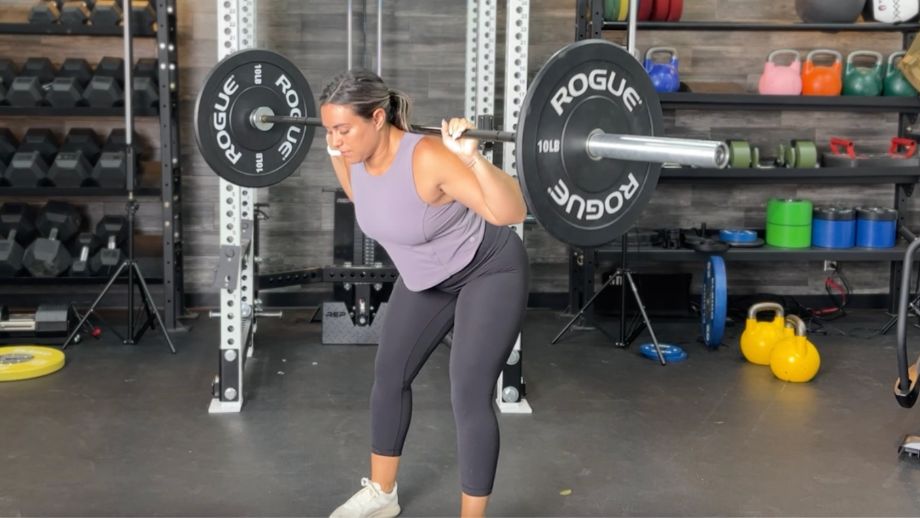
Ultimately, your warm-up will end with practice reps with an empty bar before beginning to load the barbell with working sets.
The Best Deadlift Warm-Up
Below is a sample of a full-body warm-up geared for the deadlift that should be between 15 and 20 minutes long. This is a solid warm-up for beginners, but there’s also flexibility to adjust it to your needs, whether you need to approach more hip mobility or focus on the lower body and quads.
Start with:
- Foam roll for 3 to 5 minutes
- Cycle on an exercise bike for 2 to 3 minutes
Then, 2 rounds of 5 to 8 reps each:
- Cat-Cow stretch
- Glute bridge
- Bird dog
With an empty barbell, superset the following for 2 sets of 6 to 10 reps:
- Romanian deadlift (RDL)
- Bent-over row
Finally:
- Deadlift 2 to 3 sets of 3 to 5 reps with an empty barbell
Now that you’re warmed up, let me break down why you should do each item to prime yourself for a heavy deadlift.
RELATED: How to Deadlift Heavier
Soft Tissue Work

Any good warm-up starts with a bit of soft tissue work, generally in the form of a foam roller, lacrosse ball, or some light stretching. This allows you to identify tight muscles and assess what areas to target during your warm-up. If you notice knots in your hamstrings or tight hip flexors, you can take some time to work them out before continuing your warm-up.
Foam roller exercises when combined with light, static stretching can help improve muscle flexibility and joint range of motion, according to a 2015 study3. To use a roller or massage ball, simply apply pressure to your muscles, and slowly move around the targeted area. For a deadlift, you’ll want to specifically target your lats, hamstrings, glutes, and quads.
In addition to relieving sore muscles, a short period of soft tissue work can:
- Stimulate and increase blood flow to muscles
- Help note any tightness or problem areas prior to your specific warm-up
- Prepares you for using your muscles and joints through a full range of motion3
Light Cardio

Next, after addressing sore or tight muscles, warm yourself up , as you perform best when your muscles are warm and flexible. You can increase your body temperature and heart rate through light cardiovascular exercise. In my warm-up sample, I chose cycling on an exercise bike, but any cardio will do, whether it’s a light jog, a couple minutes on a rowing machine, or even a short cardio circuit.
According to a 2017 review4, an increase in muscle temperature helps improve the rate at which your muscles contract and increases your capacity for force production. Still, the cardio should be light and you shouldn’t fatigue yourself from it, especially before a deadlift workout; deadlifts require a lot of power and strength, so you want to save that for the actual workout.
Light cardio can help benefit your workout by:
- Preparing the muscles for exercise and strength training
- Improving the quality of your movement patterns
- Minimizing your risk of injury by raising your body temperature for exercise
Core Activation
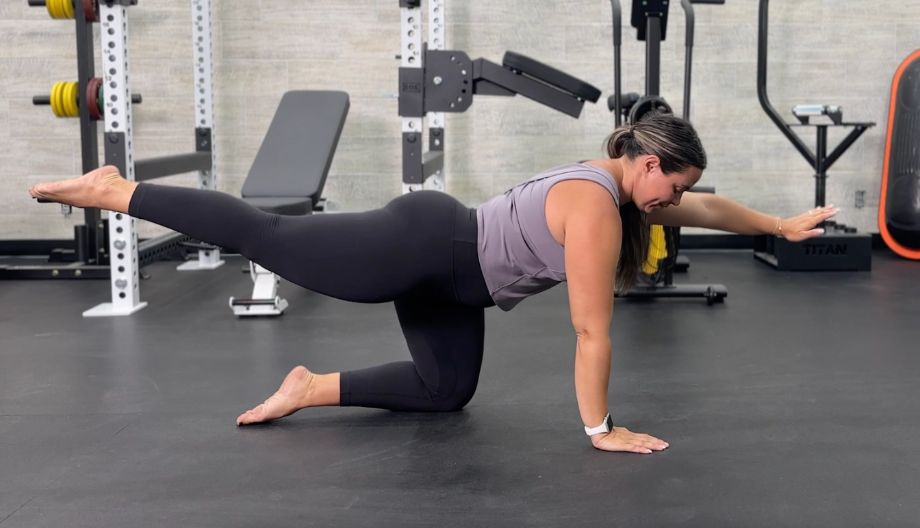
One of the most important points of the deadlift is to maintain a neutral spine throughout the movement; you don’t want any excessive flexion or extension while lifting. To ensure the posterior chain, core, and spine are ready for your heavy workout, you’ll focus on activating the core muscles. You can do this through dynamic stretches and light activation exercises to prime the muscles to fire and produce force effectively.
RELATED: 13 Deadlift Benefits
In the sample warm-up above, I suggested cat-cow stretches, glute bridges, and bird dogs; however, you can add specific exercises to suit your needs. For example, because of my tight hip flexors, I tend to do a dynamic frog stretch at this point to try and open up my hips more. This is also a great time to perform unilateral work, such as bird dogs, single-leg glute bridges or RDLs, or even a suitcase deadlift.
Activating the core helps you by:
- Isolating specific core and leg muscles to move properly
- Preparing muscles to produce power effectively
- Preparing core muscles to properly brace during training
Priming Your Back and Shoulders
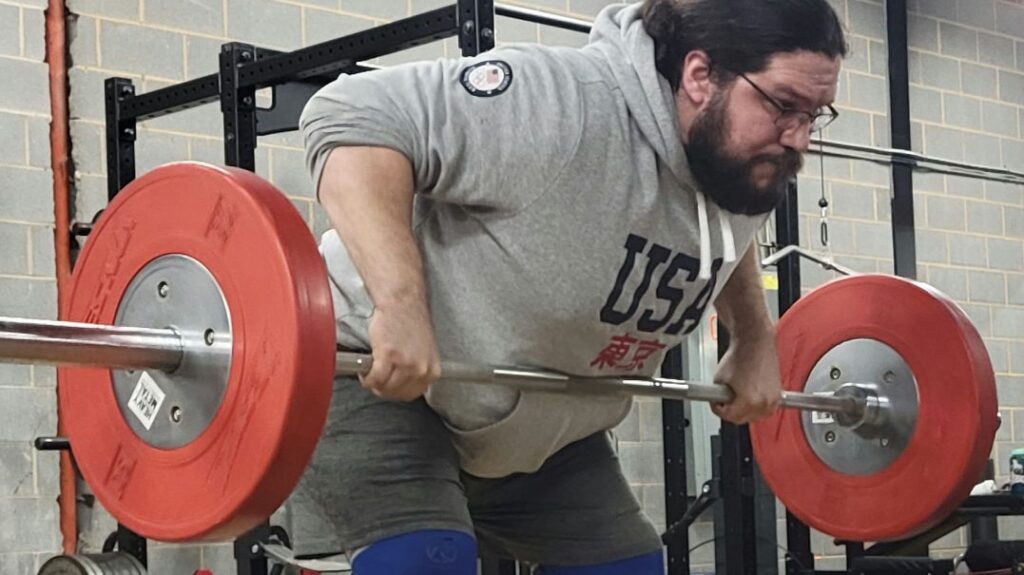
Before you move on to practice reps, you’ll need to further prime your upper body to maintain a strong position during the deadlift. For this, you want to focus on both your posterior chain and upper back muscles.
In the sample warm-up, I’m alternating between RDLs and bent rows, but you can choose any exercise that’ll engage the muscles in your upper back while also helping you maintain tension on the posterior chain: upright rows, bent flyes, or scapular push-ups are all great bent-over row alternatives. Supersetting these exercises helps to keep you moving as well and keeps your body temperature raised.
Engaging the shoulders and upper back here help you:
- Focus on a strong thoracic spine throughout your deadlifts
- Refine your deadlift technique before moving on to the actual exercise
Practice Reps
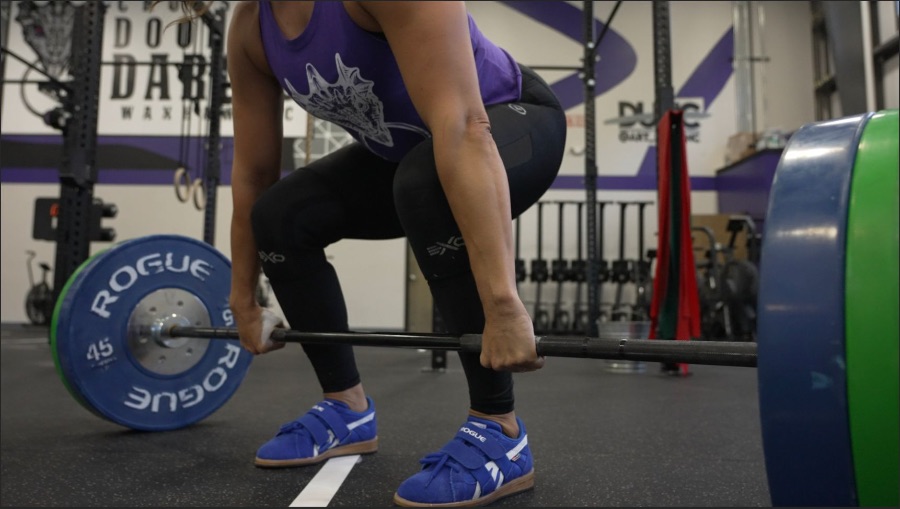
You’re ready to deadlift, but don’t start at your working weights! I can deadlift well over 600 pounds, but even I start with an empty barbell and some practice reps. Starting light with the movement helps further polish your technique and prepare you for the heavier working sets.
Start with a couple of sets with an empty barbell, but depending on where your working sets are, you’ll need to progressively add weight to the bar. The focus on every warm-up set and practice rep should be on technique and proper form. Additionally, the warm-up reps should be similar to your workout sets. You shouldn’t warm up for sets of five with deadlift singles.
Practice reps help you mentally acclimate to the heavier working sets, plus they can:
- Help you move better during your working sets
- Maximize speed and power output for heavier sets
Benefits of Deadlifts
Now that I’ve discussed the importance of warming up for it, let’s talk about the importance of the deadlift in the first place. Although the deadlift is thought of as a back and leg workout, it truly engages the entire body. Not only are your legs firing, but your core is active, your upper back is involved, and even your grip gets a workout. In addition to being a full-body workout, here are some other deadlift benefits.
Improves Leg Strength
One of the strongest benefits of the deadlift is its ability to improve leg strength in athletes and fitness enthusiasts alike.
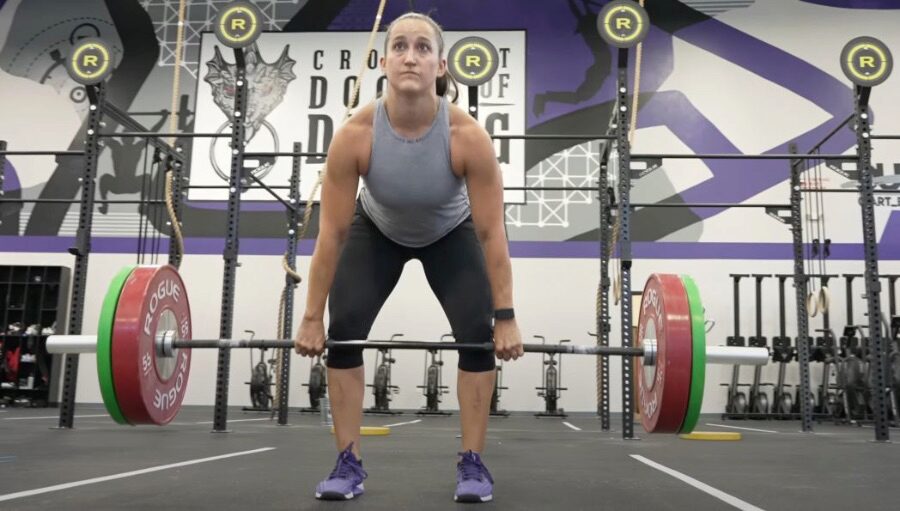
A study from the Journal of Strength and Conditioning Research5 found that athletes who regularly incorporate deadlift exercises into their training regimen improve the torque capabilities of their quads and hamstrings. This led to an increase in the athletes’ vertical jump. If you want to build muscle and strength in the legs, the deadlift is a great exercise to incorporate into your training.
RELATED: How To Build Muscle
Develops the Posterior Chain and Core
The core is a vital part of functional fitness, which focuses on mimicking movement patterns outside of the gym to improve your quality of life. The deadlift is a functional exercise and replicates lifting anything off the ground; because of that, you need a strong core. Deadlifts help strengthen your core and assist everyday movements and exercises such as squats, bench presses, and the clean and jerk.
May Reduce Lower Back Pain
Proper form in the deadlift can help build your low back muscles over time, such as the erector spinae and back extensors. Strengthening the low back muscles can lead to less back pain for those living with chronic back pain, according to a July 2015 review6.
The review emphasizes having the strength in the back and hips to maintain proper form; also, not everyone can alleviate back pain through strength training. Make sure to consult with a professional before maxing out your deadlift if you deal with back pain.
Improves Power and Athleticism
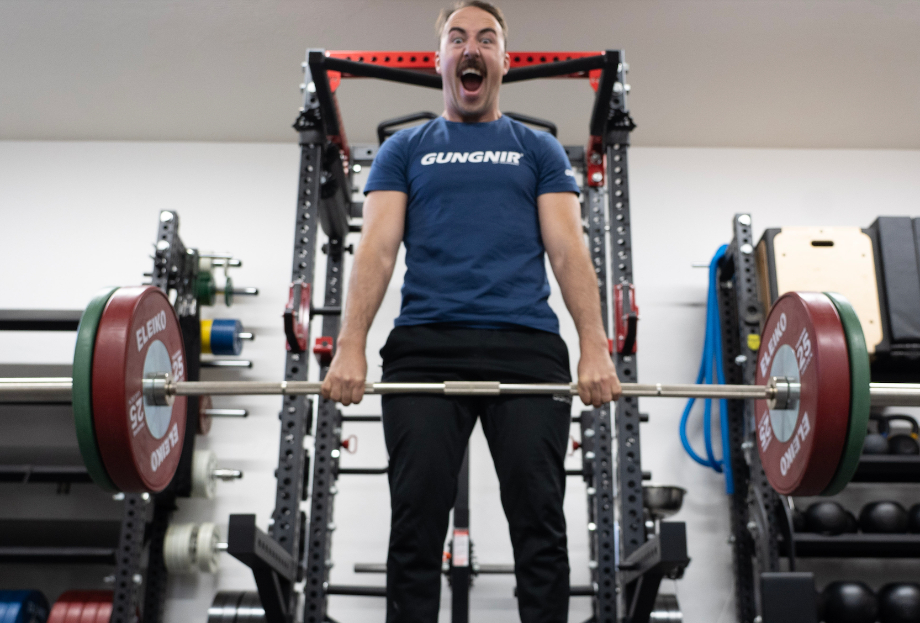
With stronger legs and a strengthened core, you’re ready to produce more power, leading to better athletic performance. A study from 20207 showed that deadlifts (and back squats) were both effective at increasing strength, which helped improve performance in athletic activities like sprints and jumps.
Deadlift Warm-Up: Final Thoughts
Whether you’re training at home or at a commercial gym, deadlifts and deadlift variations are most likely a part of your strength training program. To get the most out of them, it’s vital to have a proper warm-up beforehand. You can use the sample deadlift warm-up I have here (which is alarmingly close to how I warm up my deadlifts, too), or you can customize your warm-up to fit your needs.
However you warm up for your deadlift, make sure to incorporate the following to raise your body temperature and prime your muscles properly:
- Soft tissue work and static stretching
- Light cardiovascular exercise
- Core activation and dynamic stretching
- Back and shoulder exercises
- Practice reps of the deadlift at lighter weights
Deadlift Warm-Up: FAQs
Can I deadlift without a warm-up?
Sure, you could deadlift without warming up, but that doesn’t mean you should. You should absolutely warm-up prior to deadlifts or any strength exercises, as studies show8 that warm-ups prior to strenuous activity and workouts may help reduce your risk of injury. A proper warm-up can also help prime your muscles to perform better at working weights.
How do you stretch your lower back before deadlifts?
Before a strength workout like deadlifts, you want to do dynamic stretches to help activate the muscles in your back. A simple cat-cow stretch, where you focus on flexing and extending your lower back, can help loosen up your low back muscles. Activation exercises like glute bridges will also help prime your posterior chain for deadlifts.
What should I feel when doing deadlifts?
The deadlift is a leg and back exercise, so you should feel your posterior chain—glutes, hamstrings, and lower back muscles—and the stabilizer muscles of your back—lats and erector spinae—while performing the movement. The stress you feel on these muscle groups should purely be muscular; if you feel more than muscular strain, you may be out of position in your deadlift, and you should lighten the weight to find the proper deadlift form.
References
- Racinais S, Cocking S, Périard JD. Sports and environmental temperature: From warming-up to heating-up. Temperature (Austin). 2017 Aug 4;4(3):227-257. doi: 10.1080/23328940.2017.1356427. PMID: 28944269; PMCID: PMC5605167.
- Ribeiro B, Pereira A, Neves PP, Sousa AC, Ferraz R, Marques MC, Marinho DA, Neiva HP. The Role of Specific Warm-up during Bench Press and Squat Exercises: A Novel Approach. Int J Environ Res Public Health. 2020 Sep 22;17(18):6882. doi: 10.3390/ijerph17186882. PMID: 32971729; PMCID: PMC7558980.
- Škarabot J, Beardsley C, Štirn I. Comparing the effects of self-myofascial release with static stretching on ankle range-of-motion in adolescent athletes. Int J Sports Phys Ther. 2015 Apr;10(2):203-12. PMID: 25883869; PMCID: PMC4387728.
- Racinais S, Cocking S, Périard JD. Sports and environmental temperature: From warming-up to heating-up. Temperature (Austin). 2017 Aug 4;4(3):227-257. doi: 10.1080/23328940.2017.1356427. PMID: 28944269; PMCID: PMC5605167.
- Thompson, Brennan J.; Stock, Matt S.; Shields, JoCarol E.; Luera, Micheal J.; Munayer, Ibrahim K.; Mota, Jacob A.; Carrillo, Elias C.; Olinghouse, Kendra D.. Barbell Deadlift Training Increases the Rate of Torque Development and Vertical Jump Performance in Novices. Journal of Strength and Conditioning Research 29(1):p 1-10, January 2015. | DOI: 10.1519/JSC.0000000000000691
- Berglund, Lars1,2; Aasa, Björn2; Hellqvist, Jonas1; Michaelson, Peter3; Aasa, Ulrika1. Which Patients With Low Back Pain Benefit From Deadlift Training?. Journal of Strength and Conditioning Research 29(7):p 1803-1811, July 2015. | DOI: 10.1519/JSC.0000000000000837
- Nigro F, Bartolomei S. A Comparison Between the Squat and the Deadlift for Lower Body Strength and Power Training. J Hum Kinet. 2020 Jul 21;73:145-152. doi: 10.2478/hukin-2019-0139. PMID: 32774546; PMCID: PMC7386153.
- Ding L, Luo J, Smith DM, Mackey M, Fu H, Davis M, Hu Y. Effectiveness of Warm-Up Intervention Programs to Prevent Sports Injuries among Children and Adolescents: A Systematic Review and Meta-Analysis. Int J Environ Res Public Health. 2022 May 23;19(10):6336. doi: 10.3390/ijerph19106336. PMID: 35627873; PMCID: PMC9140806.


